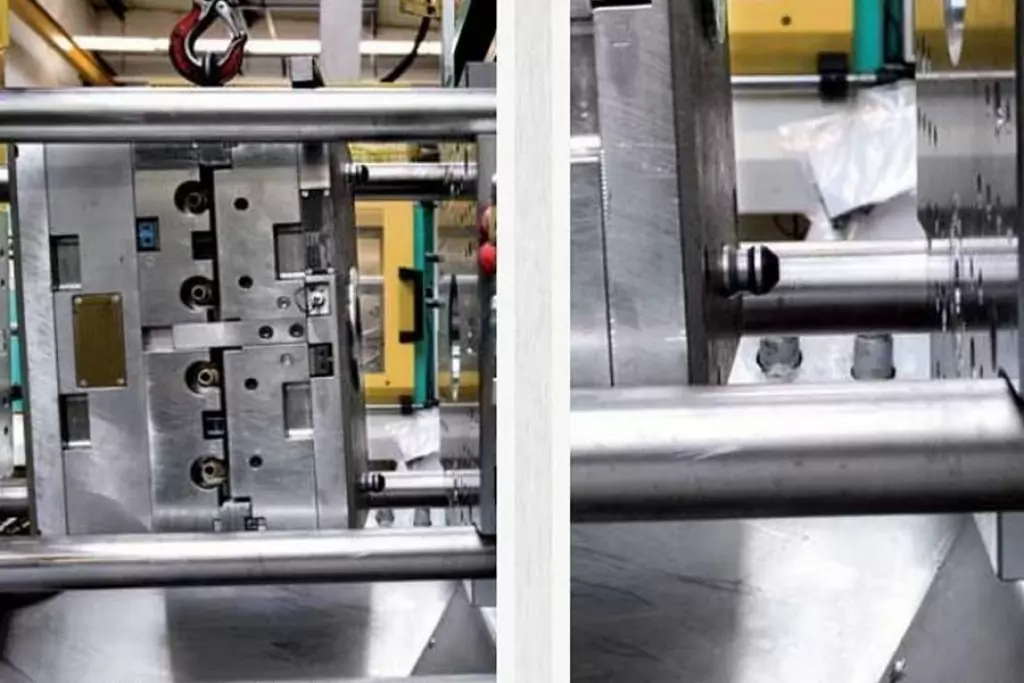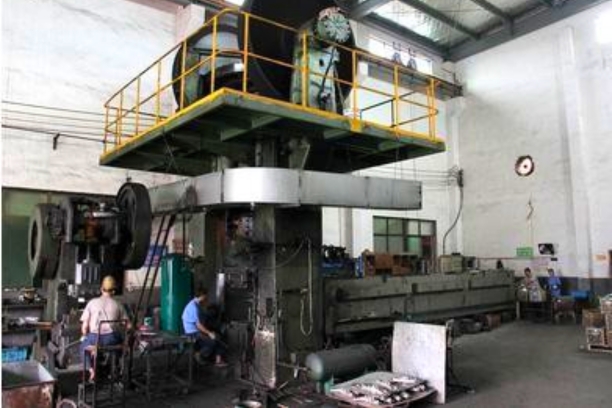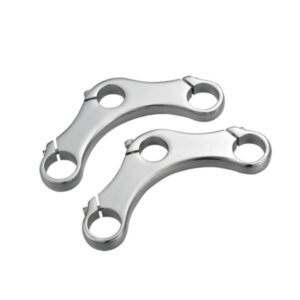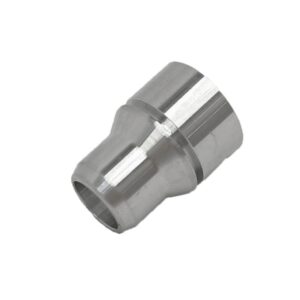MINGYU Tech specialize in the production of high quality aluminum forgings for various industries including automotive, aerospace, and machinery. With our advanced equipment and experienced team of engineers, we are able to produce a wide range of aluminum forgings that meet the strictest quality standards.
Our product portfolio includes aluminum forgings for different applications such as connecting rods, crankshafts, pump bodies, and other custom components. We use only premium quality aluminum alloys to ensure the strength and durability of our forgings. Our forgings undergo comprehensive testing processes to ensure that they meet or exceed our customers’ expectations.
we are committed to providing our customers with the best possible products and services. We offer custom forging services to meet the unique requirements of our clients. Our team works closely with customers to understand their needs and deliver tailor-made solutions that meet their specific requirements. In addition to our high-quality aluminum forgings, we also offer machining and finishing services. This allows us to provide our customers with complete solutions and reduce their production costs. We have a well-equipped machining center and a dedicated team of technicians who can handle various types of machining processes.

Aluminum forging is a manufacturing process that involves shaping heated aluminum into a desired form through the use of a mechanical press. This process creates durable, high-strength parts that are ideal for a wide range of industries, including automotive, aerospace, and construction. By using specialized dies and high pressure, aluminum forging produces parts with superior strength, fatigue resistance, and surface finish compared to other manufacturing methods. The lightweight nature of aluminum makes it a popular choice for forging, providing strong and efficient components for various applications. With the ability to create complex shapes and intricate designs, aluminum forging offers a cost-effective and reliable solution for producing high-quality and durable components.
Aluminum forging is a highly versatile and efficient manufacturing process that has gained widespread use in various industries. Through the application of extreme heat and pressure, solid aluminum blocks are transformed into complex and strong components that are used in everything from automotive parts to aerospace components. The forging process not only enhances the structural integrity of the metal but also allows for precise shaping and customization to meet the specific requirements of each application. With its lightweight yet durable properties, aluminum forging offers a cost-effective solution for producing high-quality and high-performance parts that can withstand extreme temperatures and harsh environments. From reducing weight and increasing fuel efficiency in vehicles to improving overall performance and safety in airplanes, aluminum forging continues to revolutionize the world of engineering and design

Aluminum forging is a specialized process that involves shaping aluminum into desired forms through the application of pressure and heat. It is a widely used manufacturing method for creating strong and durable components for a variety of industries, such as aerospace, automotive, and construction. With its unique properties of being lightweight, corrosion-resistant, and high strength, aluminum has become a popular choice for forging applications. In this process, aluminum billets are heated to a specific temperature, placed in a die, and then compressed by a forging press to form the desired shape. This results in a high-quality piece with enhanced mechanical properties and a refined surface finish. Let’s dive deeper into the world of aluminum forging and explore its benefits and applications.
1.Can aluminum forgings be repaired if they become damaged or worn out?
2.What is the typical tolerance range for aluminum forgings?
3.What is aluminum forging and how does it differ from other metal forging processes?
4.Can aluminum forgings be coated or anodized for additional protection or aesthetic purposes?
5.Are there any environmental concerns associated with aluminum forging?
6.How does the use of lubricants during aluminum forging affect the final product?
7.What are the challenges associated with machining or finishing aluminum forgings?
8.Are there any heat treatment options available for improving the properties of aluminum forgings?
1.Can aluminum forgings be repaired if they become damaged or worn out?
Yes, aluminum forgings can be repaired if they become damaged or worn out. The repair process will depend on the extent of the damage and the type of forging. In some cases, the damaged area can be machined or ground down and then re-forged to restore its original shape. In other cases, the forging may need to be heated and reshaped using specialized tools and techniques. It is important to consult with a professional or the manufacturer for the best repair method for your specific forging.
2.What is the typical tolerance range for aluminum forgings?
The typical tolerance range for aluminum forgings is +/- 0.005 to 0.010 inches. However, this can vary depending on the size and complexity of the forging, as well as the specific requirements of the customer. Some forgings may have tighter tolerances, while others may have looser tolerances. It is important to consult with the forging manufacturer to determine the specific tolerance range for a particular forging.
3.What is aluminum forging and how does it differ from other metal forging processes?
Aluminum forging is a metalworking process in which aluminum is heated and shaped using compressive forces. This process involves heating the aluminum to a high temperature and then applying pressure to shape it into a desired form. The heated aluminum is typically placed in a die, which is a tool with a specific shape, and then compressed using a hammer or press.
Aluminum forging differs from other metal forging processes in several ways. One key difference is the temperature at which the metal is heated. Aluminum has a lower melting point compared to other metals commonly used in forging, such as steel or iron. This means that aluminum can be heated to a lower temperature, making it easier to work with and reducing the risk of overheating and damaging the metal.
Another difference is the type of equipment used. Aluminum forging typically requires specialized equipment, such as a hydraulic press or a drop hammer, that is specifically designed to work with the lower temperatures and softer nature of aluminum.
The final product of aluminum forging also differs from other metal forging processes. Due to its lower melting point, aluminum can be forged into more intricate and complex shapes, making it a popular choice for applications that require lightweight and high-strength components, such as in the aerospace and automotive industries.
Overall, aluminum forging is a unique metalworking process that offers distinct advantages over other forging methods, making it a popular choice for a wide range of industrial applications.
4.Can aluminum forgings be coated or anodized for additional protection or aesthetic purposes?
Yes, aluminum forgings can be coated or anodized for additional protection or aesthetic purposes. Coating options include powder coating, painting, and plating, while anodizing involves creating a protective oxide layer on the surface of the aluminum. These processes can provide added corrosion resistance, improve surface hardness, and enhance the appearance of the forgings.
5.Are there any environmental concerns associated with aluminum forging?
Yes, there are several environmental concerns associated with aluminum forging, including:
- Energy consumption: Aluminum forging requires a significant amount of energy, which contributes to greenhouse gas emissions and climate change.
- Air pollution: The heating and melting of aluminum during the forging process can release harmful pollutants into the air, such as carbon monoxide, sulfur dioxide, and nitrogen oxides.
- Water pollution: The use of water for cooling and quenching during the forging process can lead to water pollution if not properly treated and disposed of.
- Waste generation: The forging process can generate a significant amount of waste, including scrap metal, scale, and other byproducts, which can be difficult to dispose of and may contain hazardous materials.
- Land use: The land required for aluminum mining and processing can have a significant impact on local ecosystems and wildlife habitats.
- Recycling challenges: While aluminum is a highly recyclable material, the forging process can make it more difficult to recycle due to the mixing of different alloys and the presence of contaminants.
- Occupational hazards: The forging process involves high temperatures and heavy machinery, which can pose health and safety risks for workers if proper precautions are not taken.
Overall, the environmental impact of aluminum forging can be reduced through the use of energy-efficient processes, proper waste management, and responsible sourcing of raw materials.
6.How does the use of lubricants during aluminum forging affect the final product?
The use of lubricants during aluminum forging can have a significant impact on the final product in several ways:
- Improved surface finish: Lubricants help to reduce friction between the aluminum and the forging dies, resulting in a smoother surface finish on the final product. This is especially important for products that require a high level of precision and aesthetic appeal.
- Reduced wear on dies: The use of lubricants can also help to reduce wear on the forging dies, prolonging their lifespan and reducing the need for frequent replacements. This can result in cost savings for the manufacturer.
- Enhanced flow of metal: Lubricants can improve the flow of aluminum during the forging process, making it easier to shape and form the metal into the desired shape. This can result in a more uniform and consistent final product.
- Prevention of surface defects: Without proper lubrication, the high temperatures and pressures involved in aluminum forging can cause surface defects such as cracks, tears, and folds. Lubricants help to prevent these defects by reducing friction and heat buildup.
- Improved dimensional accuracy: By reducing friction and improving the flow of metal, lubricants can help to achieve greater dimensional accuracy in the final product. This is especially important for products that require tight tolerances.
Overall, the use of lubricants during aluminum forging can result in a higher quality final product with improved surface finish, dimensional accuracy, and reduced defects. It also helps to increase the efficiency of the forging process and prolong the lifespan of the forging dies.
7.What are the challenges associated with machining or finishing aluminum forgings?
1. Work hardening: Aluminum forgings can become harder and more difficult to machine as they are worked and shaped. This can lead to increased tool wear and slower machining speeds.
- Heat sensitivity: Aluminum is a highly heat-sensitive material, meaning that it can easily deform or warp when exposed to high temperatures. This can be a challenge when machining or finishing aluminum forgings, as the heat generated by cutting tools can affect the shape and dimensions of the part.
- Chip control: Aluminum is a soft and ductile material, which can result in long, stringy chips during machining. These chips can be difficult to control and can cause issues with tooling and surface finish.
- Surface finish: Achieving a smooth and consistent surface finish on aluminum forgings can be challenging due to the material’s softness and tendency to deform under pressure. This can be especially problematic for complex or intricate shapes.
- Tool selection: Choosing the right cutting tools for machining aluminum forgings can be a challenge. The material’s softness and tendency to work harden can require specialized tooling to achieve efficient and accurate machining.
- Burrs and sharp edges: Aluminum forgings can have sharp edges and burrs that need to be removed during finishing. This can be a time-consuming and labor-intensive process, especially for complex or intricate parts.
- Material variability: The composition and properties of aluminum forgings can vary depending on the alloy and manufacturing process used. This can make it challenging to develop a consistent and efficient machining or finishing process.
- Dimensional stability: Aluminum forgings can be prone to dimensional changes during machining or finishing due to their sensitivity to heat and pressure. This can make it difficult to maintain tight tolerances and achieve precise dimensions.
- Safety concerns: Machining and finishing aluminum forgings can produce fine aluminum dust, which can be a health hazard if inhaled. Proper safety measures, such as using appropriate ventilation and personal protective equipment, must be taken to minimize the risk of exposure.
- Cost: Machining and finishing aluminum forgings can be more expensive compared to other materials due to the specialized tooling and processes required. This can be a challenge for manufacturers looking to reduce costs and improve efficiency.
8.Are there any heat treatment options available for improving the properties of aluminum forgings?
Yes, there are several heat treatment options available for improving the properties of aluminum forgings. These include:
Solution heat treatment: This involves heating the aluminum forging to a high temperature and then quenching it in water or oil. This process helps to dissolve any alloying elements and create a uniform microstructure, resulting in improved strength and ductility.
Precipitation hardening: After solution heat treatment, the aluminum forging is aged at a lower temperature to allow the formation of fine precipitates. This process increases the strength and hardness of the forging.
Annealing: This involves heating the aluminum forging to a high temperature and then slowly cooling it to room temperature. This process helps to relieve internal stresses and improve the ductility of the forging.
Stress relieving: This process involves heating the aluminum forging to a temperature below its melting point and then slowly cooling it. This helps to reduce residual stresses and improve the dimensional stability of the forging.
T6 heat treatment: This is a combination of solution heat treatment and artificial aging. It is commonly used for aluminum forgings to achieve a balance of strength, toughness, and corrosion resistance.
It is important to note that the specific heat treatment process used will depend on the alloy composition and desired properties of the aluminum forging. It is recommended to consult with a metallurgical expert to determine the most suitable heat treatment for a specific application.




